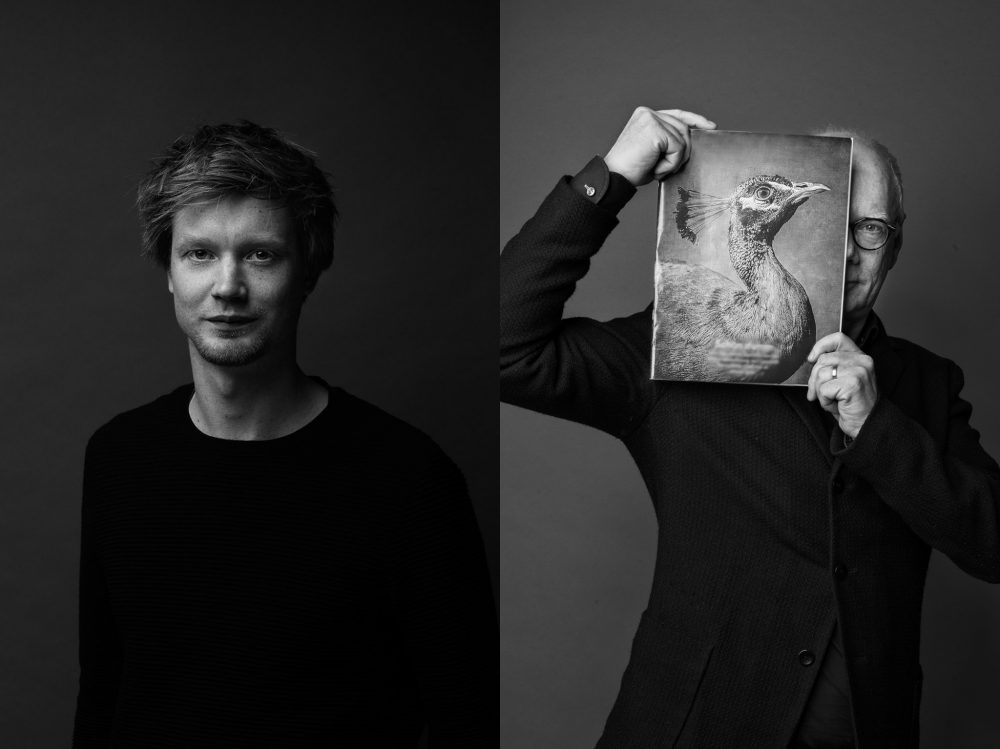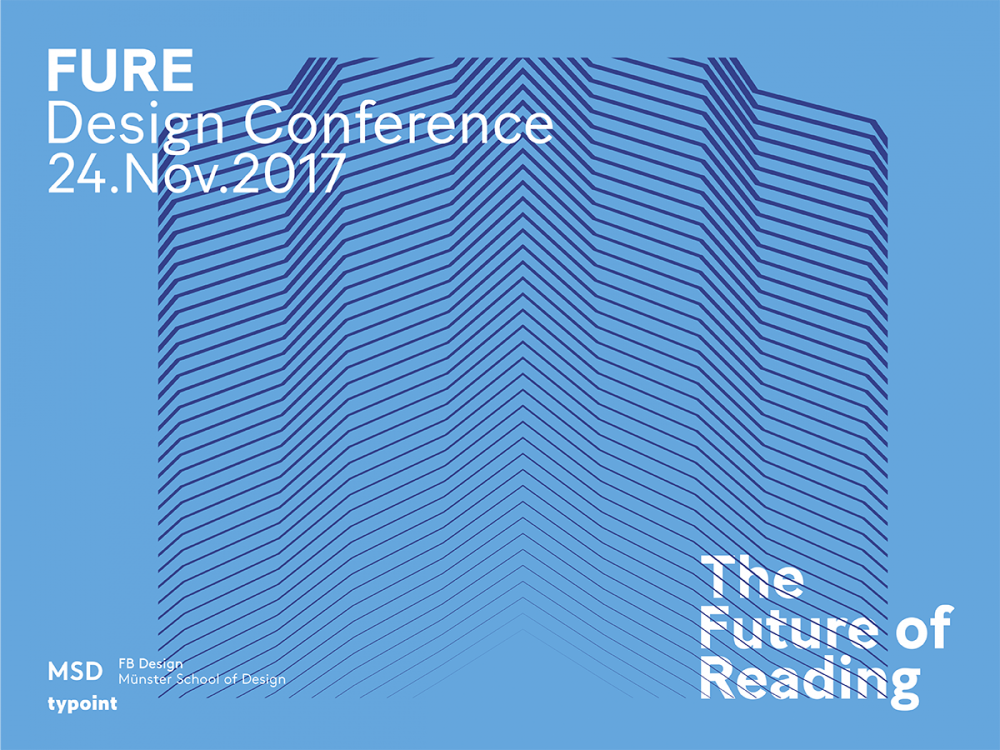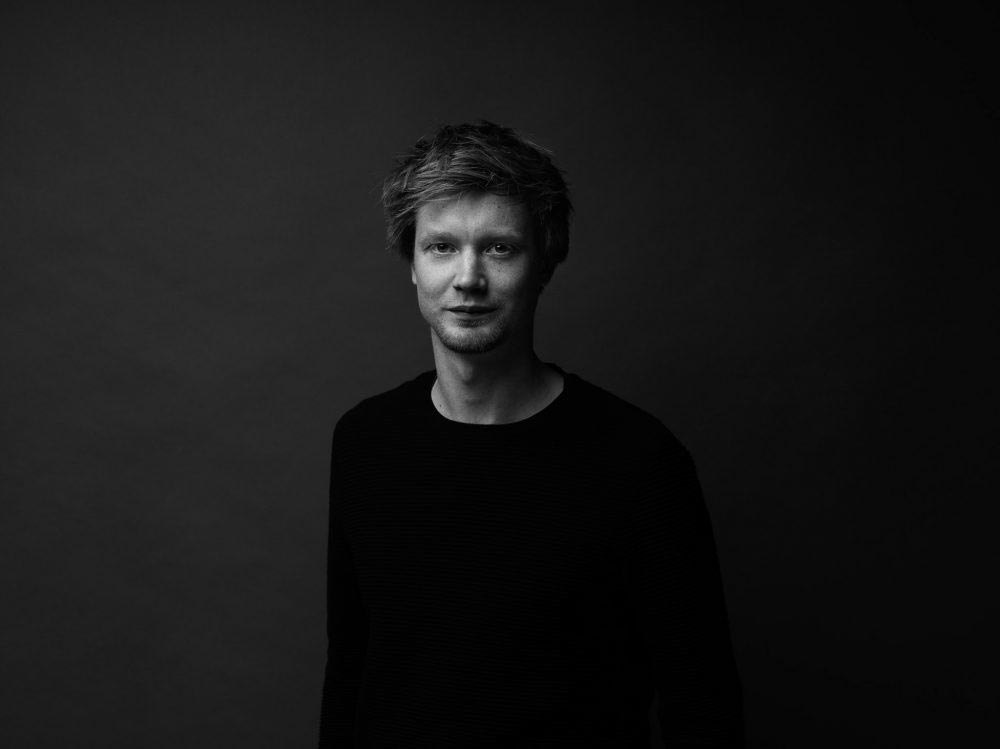
20.10. The founders of The Future of Reading on “why digital needs print”
Patrick Marc Sommer and Rüdiger Quass von Deyen are the brains behind the Future of Reading congress (FURE). On 24th of November a handpicked selection of speakers will come together in the German town Münster to discuss the importance of print in the era of digitization.
What role print media are going to play in a future, dominated by Facebook Videos and Instagram Stories? How can writers, publishers and designers prepare themselves for this transformation? This and many more topics will be up for discussion.
FURE provides a platform for the exchange of ideas, visions and positions. The conference is a place, where the print industry can come together and contemplate about the transformation process it faces.
In this interview Patrick and Rüdiger talk about the foundations of the Future of Reading conference and their take on the discussion about print and digital.

How did the “Future of Reading” conference come about?
Patrick: The industry is very much moving towards digitization – both in a positive and in a negative way. Where can the printing sector re-establish itself? What new approaches are there for digital reading? How can we as designers prepare ourselves for this? In my job, I focus on the design and implementation of publications with a particular focus on typography. This is why this issue is very important to me and I look forward to new aspects all around the future of reading.
Rüdiger and I have wanted to stage such an event for a while and after some shared discussions we made it possible.
Rüdiger: That needs a little bit of an explanation: Between 1500 and 1800, the invention of the printing press already dramatically changed everyday life. The mass production of books greatly simplified the exchange of new ideas and gave access to the collective knowledge of mankind. Pamphlets helped to quickly disseminate news – just like Twitter and messaging services today – and just like present day blogs and Wikipedia, treatises then served to exchange knowledge and opinions in lively debates on all kinds of topics. The Reformation was thus an early media revolution. Today, we are living in a globalized society that is only just learning to deal with so much more information. In teaching as well as in my professional life, I am a participant in and accompany the discussion about changes and shifts in digital and analogue communication. Reading is much more than the intake of information, and FURE approaches the issues that affect all media. At one point of our joint discussions it became obvious we had to offer these discussions a platform, to promote and demand the exchange of science, experiment and practice.

Let’s briefly look into the content – what are you particularly looking forward to?
Patrick: The conference is dedicated to print and web alike. Our speakers come from a wide range of areas, and their diversity is very important to us. They include Hanne Mandik (Kiepenheuer & Witsch), who is concerned with the design of typographically sophisticated e-book layouts and with the future of e-books, Frank Rausch (app developer and specialist for digital typography), who will talk about good reading typography for dynamic content, Holger Windfuhr (art director of the Frankfurter Allgemeine Zeitung), who explains what digital can achieve as opposed to print, and why digital needs print, or Florian Adler, who engages in the design of publications and websites to make them readable and attractive to people both with and without visual impairments.
I look forward to new approaches, opinions and exchange on reading.
Rüdiger: As I just said, the invention of the printing press marks the birth of the mass media. As the literacy progressed, more and more people could be reached through books, pamphlets and newspapers. From today’s point of view, however, book printing was the shortage of centralized one-way communication.
Today, once you have access to the internet, the barriers of technical competence have become much lower. If you are not concerned with the written word, you can upload a video to the World Wide Web with your mobile phone within seconds. The comment, the opposing position is just a click away. This creates a completely different situation, a shift in the market and above all of power. With the fall of the publication threshold, the competition for attention becomes tougher. The diversity of the content of our speakers points at the range of tasks we designers face today and in the future.
I am looking forward to new approaches, positions and perspectives as well as to discussions on reading and the “seduction” to reading.

Digital or print? What are you currently reading?
Rüdiger: Oh dear … I’m quite a hotchpotch. I read current news on my mobile phone. Very deliberately from different perspectives … I read “Spiegel Online” as well as the “Die Welt”. I find both approaches important for my own opinion making, to mention only the two. At the weekend it should be the “FAS”. Maybe that’s a kind of generation thing. But I love to deal with such a format on a sunny Sunday or during November rain by the fireplace.
Great stories certainly require a book with its dimensions, its visible number of pages. This represents tangible significance to me. Right now it is the Mao-biography by Jung Chang and Jon Halliday. I like historical subjects and novels.
I still stick with magazines, too. Regarding one of my most important topics, soccer, “11 Freunde” is an indispensable part of my media life – by the way the only magazine I have subscribed to.
Patrick: I like to read books in print form. So far, I find it hard to make friends with ebooks. I am very fond of well-designed books with beautiful paper. I find haptics very important! At the moment there are seven books by my bed, two of which I am reading: “The Club” by Takis Würger from Kein & Aber Verlag and “Watten: Ein Nachlass” from the Suhrkamp Letterpress Edition.
For news and novelties on design I consult various news pages, Twitter, Facebook, etc. On my mobile phone I like to read articles on Blendle. That makes it very practical to read individual articles from different newspapers and magazines.
Besides that, I visit Design made in Germany and the new blog Design We Like every day, both of which I write for.
FURE – The Future of Reading
Design Conference
24 November 2017, Münster
Tickets and more information at:
http://www.futureofreading.de